By Kylie Nicholls, The Land July 22, 2021
Chasing a top Angus performance at Guy Fawkes Station
The James family has been leasing Te Mania stud bulls for more than 10 years, aiming to produce quality steers for the feedlot market.
Accessing high-performing Angus genetics and the latest breeding technologies is enabling New England beef operation, Guy Fawkes Station, to consistently produce a quality steer for the feeder market.
Based at Ebor, NSW, owners Fraser and Pam James, with help from assistant manager Gus Watters, will calve down 530 Angus cows this year and 125 Angus heifers, which were artificially inseminated, on their 960-hectare property.
After purchasing the farm in 2004, the family spent the first six years fattening bullocks and backgrounder feeder steers, before making the change to an Angus breeding herd, buying a line of pregnancy-tested-in-calf Angus heifers in 2011.
“It was always going to be Angus or Wagyu because they’re at the quality end of the market and if you are a small operator like us, you can only ever get so much scale, so you need to be maximising your revenue opportunities,” Mr James said.
“I believe the Angus breed is more versatile, it has a broader market base, you get better weight gains, and with the right genetics there are Angus steers that will marble seven plus so they are easily up there with F1 Wagyus.”
They are in the process of rebuilding herd numbers after selling 200 older cows in 2019, due to being hit with both drought and bushfires. The James’ plan to get up to 700 Te Mania-blood breeders next year.
Depending on seasonal conditions, they also buy in trade steers and are currently running 300 head, purchased during the past few months.
Team collaboration is key
According to Mr James, pivotal to the genetic progress of his Angus herd was the decision in 2011 to purchase several Te Mania bulls at the stud’s Northern Spring Bull Sale, Walgett, NSW.
“I spent a lot of time looking at what the various studs had to offer and went with Te Mania because what I get is quality genetics, backed by years of performance recording, and collaboration through the Team Te Mania program and those things are very valuable to me,” he said.
“Te Mania have been performance recording for more than 50 years, they calve down close to 2000 cows each year, and importantly run their cows and bulls in very large mobs so that they get very accurate cohort data.
“Through the progeny test herds in the team program they are also able to collect very accurate and extensive data on lots of bulls.
“If you look at any of the reference sires in their bull sale catalogues you will find most bulls will have several hundred or more progeny tested and carcases scanned and they will be represented in dozens of different herds, giving you much higher data accuracy.”
The James family also joined the innovative Team Te Mania program in 2012 and have been pleased with the strong relationships and support they have developed with other team members.
“It is valuable because it is a point of difference in a very crowded Angus field,” Mr James said.
“It allows a small producer like myself to punch above my weight and be part of a group of producers aligned to the same high performance genetic base.”
Proven sires
The James family aims to breed sound, fertile and functional cows which will produce steers reaching 480 to 500 kilograms liveweight suitable for the Rangers Valley feedlot long-fed program.
Mr James uses visual appraisal, estimated breeding values (EBVs) and specific sire lines to select bulls from the Te Mania stud, Mortlake, Victoria.
Significant emphasis is placed on structural soundness, growth, and carcase traits such as eye muscle area and marbling.
“We want the steers to have adequate growth without being elephants, they need to marble and they need to have good legs and feet to stand up in the feedlot for 270 days,” Mr James said.
“In bulls I look for balance not extremes, I want +3 for marbling, 600-day growth around 120, mature cow weight around 400 days’ growth to cap cow size and rib and rump fat around zero to one per cent.
“In terms of heifer bulls I look at proven sire lines. I like a birth weight under four and a short gestation length, and a nice smooth shoulder and head is important for ease of calving.”
Through the Team Te Mania program, Mr James leases all his bulls for three years enabling fresh genetics to be introduced regularly and for every five leased bulls, a free back-up bull is also supplied.
“Using Te Mania bulls gives me depth, and enables me to breed to a type,” he said.
“I can find a cow family or a bull family that I like and get access to a number of bulls from that specific line, which enables us to infuse a lot of those genetics into our herd very quickly.”
The cows are joined for eight weeks from early November to start calving in mid-August, maximising the spring flush of feed.
A fixed time artificial insemination program is carried out with the heifers who all calve down in early July over a 12-day period.
The cows are pregnancy tested after weaning in March or April, with conception rates in the cows averaging 96pc this year while the heifers averaged 52 to 54pc to AI, with back up bulls going in 10 days post AI.
“I prefer to use AI with the heifers because the semen is a very good price through Team Te Mania and I get to use their best young proven genetics,” Mr James said.
“Having at least 80pc of your heifers calve over a one-week period is a fantastic management opportunity. You’ve got most of the calves on the ground in a block in terms of weight and the heifers have got a lot more time to start their recovery.
“Having them all calve in July and out on a decent paddock as soon as possible gives them time to freshen up for their second joining.”
Typically, about 240 heifers will be AI’d each year, with a joining weight of more than 350kg targeted.
Half the heifers will be retained in the herd, while the remainder are marketed through the Team Te Mania program as PTIC heifers for future breeders.
Selection technology
Last year, the James family decided to introduce Angus Australia’s genomic selection tool HeiferSELECT to their breeding operation to help class replacement heifers.
The HeiferSELECT tool provides genomic predictions for nine important maternal, growth and carcase traits as well as sire identification and a genetic prediction of a heifer’s breeding value.
So far, all the heifers born in 2019, which are due to calve shortly, have been genomically tested and they have taken DNA samples from the 2020-drop heifers.
“Because I don’t single sire mate, this allows me to identify heifer performance based on their sire and I can see which of my bulls are working well,” Mr James said.
“The genetic data of your females will on average equal the genetic data of your steers given that they are the same cohort, so the information also provides me with genetic predictions for my steers.
“Although it’s still early days in terms of accuracy, it’s more data than I have currently and gives me something I can now start tracking and utilise in my business.
“You can’t produce good feeder steers without having really good cows to start with, so you have to make sure you don’t chase a trait on the steer side that is going to be detrimental to the cow side.”
Hitting the specs
Mr James will look at marketing the heavier portion of the steers from December onwards through until the following March at between 480 to 500kg live weight, direct to Rangers Valley feedlot.
Any steers that go over the feedlot entry weight will be sold to the grass-fed market through JBS Australia or Teys.
“I’ve been really encouraged by the forward pricing agreements that various feedlots are now offering for Angus cattle,” he said.
“I’m using those contracts to lock in my margins on trade cattle I’ve purchased and also my own home-bred steers. “I’ve been really pleased with the market and how my steers are performing.”
Thriving pastures
According to Mr James, careful pasture monitoring and intensive cell grazing plays a key role in maximising steer and heifer growth.
The farm comprises a diverse mix of pastures, with half of the property sown down to high performance varieties including soft-leaved cocksfoot, fescue, prairie grass, plantain, and red and white clovers.
The remaining pasture includes several older varieties of cocksfoot with a white and sub-clover base. The herd is set stocked during calving and then rotationally grazed from October onwards after calf marking.
All the calves are yard-weaned in April and moved into a “high performance” cell grazing rotation until the steer portion is sold and the heifers are ready to be joined.
“Typically our paddock size is 8 to 10ha and we run as big mobs as possible, up to 200 weaners in one mob.
“Weight gains of more than 1kg/day are achieved in spring and summer, and with the help of ruminant nutritionists, my focus is on better understanding how cattle really work.
“Excessive protein is the enemy of weight gain, so I’m now building a system that incorporates regular pasture testing and fibre and starch supplements to optimise rumen function.”
2022, 31 August ANGUS HEIFERSELECT – VALUABLE INSIGHT FOR HERD MANAGEMENT
Member of Team Te Mania since 2012
Johne’s Status – Beef Only
Calving period – Aug – Sept




